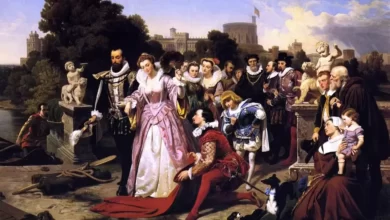
Georgia in 1921-1945
After occupation of Georgia by Lenin Russia, Communists began to depress the rival forces and to strengthen their power. Armed Forces of Democratic Republic, State and Elective Bodies and Non-Proletarian Parties were abolished. Privacy of lands was abolished as well, a whole industry, railways, fleet, banks etc. passed in the hands of the government. Punisher organizations held the massive shooting and exile on oppositionists of the regime and even suspected persons. Especially, former officers and representatives of nobility and intelligentsia. With the aim of setting atheism, Communists destroyed churches, exterminated clergymen; only in 1922-1923 1500 churches were destroyed in Georgia.
In spite of bloody terror, anti-communistic actions took place in Georgia in 1921-1924. But they were disconnected and government easily managed to localize and suppress them. The most important movement took place in 1924. Rebels had contacts with immigrated government. Simultaneous actions in different regions were planned, but Communists arrested several rebellion leaders. So, the rebellion was not organized and it was cruelly suppressed.
Soviet Socialist Republic of Georgia (it was officially called so by that time), was considered as the independent state at first, but its territory was occupied by Russian Army, and Georgian Communists acted only under Moscow orders. The plan of further state construction of Soviet Georgia was made in Moscow as well, which would simplify its steps into Soviet political and economical system.
Georgian SSR, in fact, was a federal state. At the end of 1921 on the ground of the Alliance Agreement, Abkhazia SSR (Autonomous Republic since 1931) entered its structure. Besides, there was created Ajara Autonomous Republic on Georgia territory in 1921 and South Ossetia Autonomous Region in 1922. Georgia SSR itself with Azerbaijan and Armenia, by the proposal of Lenin in 1922, was in Transcaucasia Federation, which entered USSR, created at the end of the same year. In 1936 Transcaucasia Federation was abolished, and Georgia directly entered Soviet Union structure.
From the second half of the 20s, swift processes of industrialization and collectivization began in Soviet State, the real aim of which was maximal strengthening of existing regime. There were built a lot of factories, hydroelectric power stations and mines in Georgia. Coal and Manganese widely mined. Technical cultures, especially tea and citrus for the huge soviet market, were mastered in Agriculture. But enterprises, built in accelerated tempos were of a low quality. The sowing territories were widened after chopping woods. Setting monocultures in all regions lost the traditional light to Georgian many-sided agriculture.
Communist dogmatism in USSR considered industrialization and collectivization with the cultural revolution, as the main condition for socialism. So, in the 20-30s the amount of secondary and high educational institutions rose in Georgia. Science and Art developed. In 1940 there was established the Academy of Science of Georgia USSR. But from that very time the individual thinking abilities of the creative intelligentsia, literature and art representatives were reduced. Everything was obeyed to the Communist Dictatorship Ideology. With the aim of the final frightening and spiritual weakness of the several millionian population of Soviet Union, Stalin government ran the wide repressions in the second half of the 30s, which appeared in the first days of existence of the Communist Regime, but they became especially massive in 1937-1938. Georgia was one of those regions of SSR, where the repressing engine was particularly active. During those years, there were shot thousands of innocent people in Georgia, and even more were sent in “Gulag” camps, where the most of them found their oppressed death. Among repressed people there were the best representatives of intelligentsia, including such remarkable representatives of Georgian culture, as writer M. Javakhishvili, poets T. Tabidze and P. Iashvili, stage-manager S. Akhmeteli, scientist-philologist Gr. Tsereteli, conductor E. Mikeladze etc. Villages were involved in the massive repressions as well, where thousands of peasants died from the public collectivization, which ended in that period.
Political repressions of 30s took lives of the Soviet army and Military-industrial complex personnel, which caused the blow to the self-defencability of the country, but because of those very repressions, the fear, set in the society, strengthened the authoritative Stalin Regime and helped to mobilize all total forces of Soviet Union in the war against Germany, which started on June 22, 1941. There didn’t actually take place military movements on Georgian territory (only in summer of 1942, Germans invaded Abkhazia and occupied one village), but the country sacrificed the maximum of its demographic and material resources in this war.
In Georgia, the population of which was 3612 thousand in 1940, there were mobiled and sent in the active army more than 700 thousand people, and more than 300 thousands haven’t returned back. The part of the people from Georgia fought in the national Georgian divisions and majority in the other parts of many-national Soviet army.
Georgians fought in partisan groups, as on the SSR territory, so in the countries occupied by Nazis. Among Georgians there were people, who stood for Germany and fought under its flag. Most of them acted on the ground of belief that the victory of Germany would bring the liberation for Georgia. But the amount of those people was scanty in comparison with these legions, which fought for the liberty of USSR.
Most of Georgians who fought in Soviet army, sincerely believed that they protected the “Socialism Property”, which was at the high value rank of the Communist Propaganda in that time. Besides, a Georgian soldier knew that any place he fought, in Moscow, Ukraina of on Volga, he was defending Georgia from the horrors of the war and from that slavery, which was caused by Hitler regime to the occupied countries.
The home front laborers were ruled by the same aims as well, which played a big role in the victory over the enemy. The whole economic of Georgia worked with maximal power for the front. In spite of the conscription of the large part of qualified laborers, the machine-building and metal-working factories redoubled their productivity. The place of the soldier laborers at their machines took their wives, sisters and daughters. The large amount of armament, military materials and uniforms was produced. 200 new enterprises were built. Soviet collective farms highly implemented agricultural and production plans. Georgia sheltered also many thousands of evacuated people from the territories, occupied by Nazis. In the famous resorts and medical institutions, wounded Soviet soldiers had courses of cure.
Thus, the population of Georgia played an important role in that great victory, which was got in the struggle against Fascism by Soviet people.
by Dr. George Anchabadze




